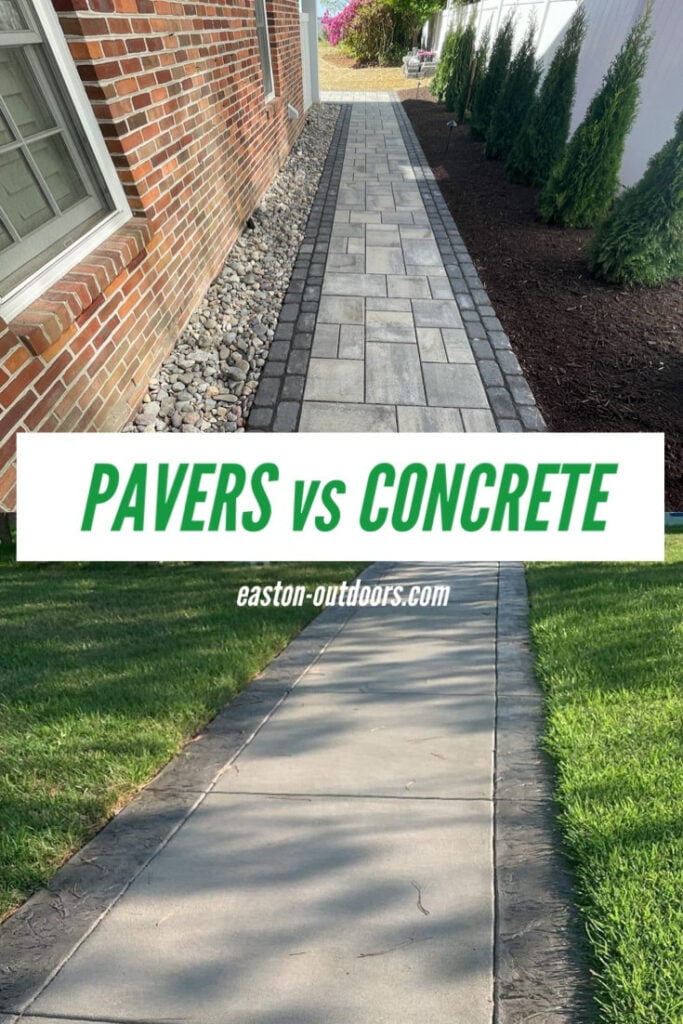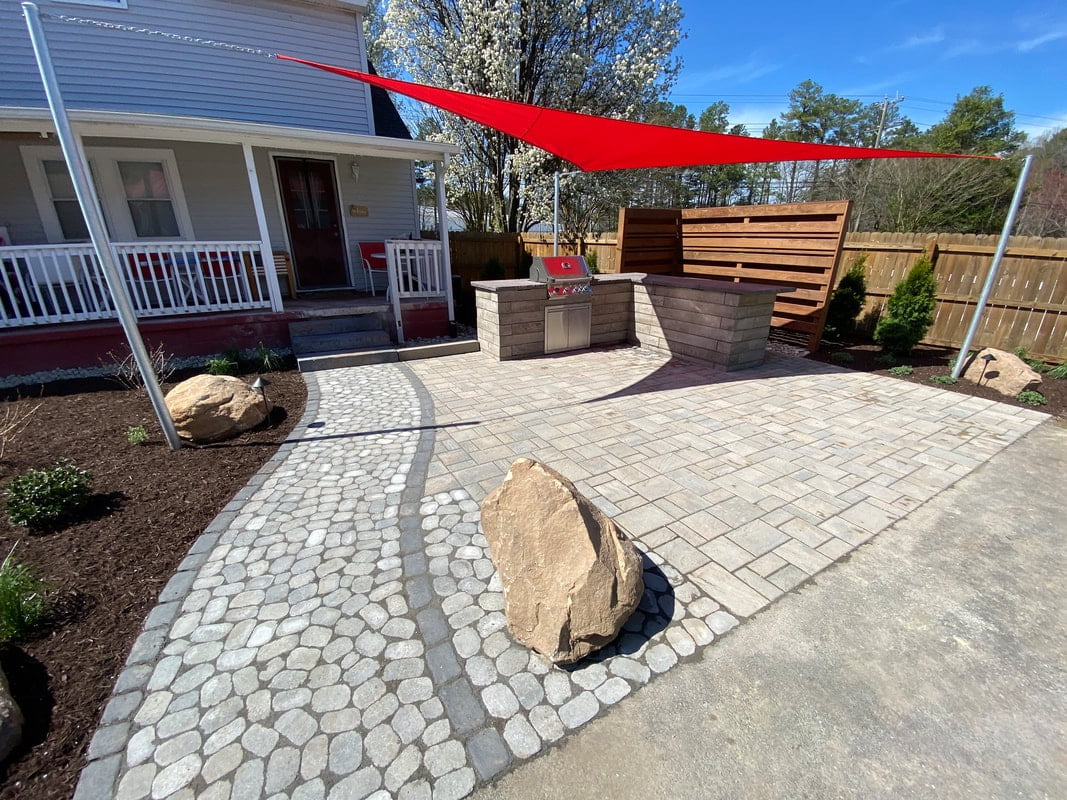
18 May Pavers vs Concrete: Six Differences You Need to Know Before Your Next Project
In this blog, we’re answering some common questions about using pavers or concrete for your next backyard project, including:
- Cost: which is more expensive, pavers or concrete?
- Cracking: is it a question of if, or just a question of when?
- Maintenance: how often and what will it cost?
- Weather: how does it impact the installation process?
- Warranty: what guarantees do I have?
- Speed: how long does it take to install?
If you’re thinking about replacing a driveway or installing a new patio for your outdoor space, you’re probably looking at all of the options and wondering which choice is going to be best for you. In this post we teamed up with our friend Adam from Commercial Concrete to talk about six important differences for you to consider when comparing concrete versus pavers.
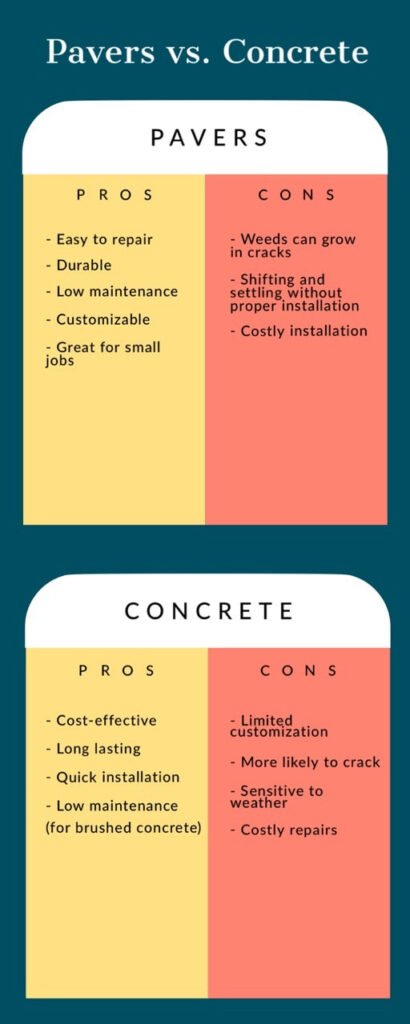
1. Cost
The first thing most people think of when it comes to pavers versus concrete is the price. Generally speaking, poured concrete is going to be quite a bit cheaper than pavers. On average you will spend $8-10 per square foot for standard brushed concrete, whereas pavers are going to cost anywhere from $25-35 per square foot. However, once you start looking at stamped concrete that might not always be the case. To get a more accurate idea of which option is most affordable, it’s best if we break it down by job size.
100 Square Foot Job
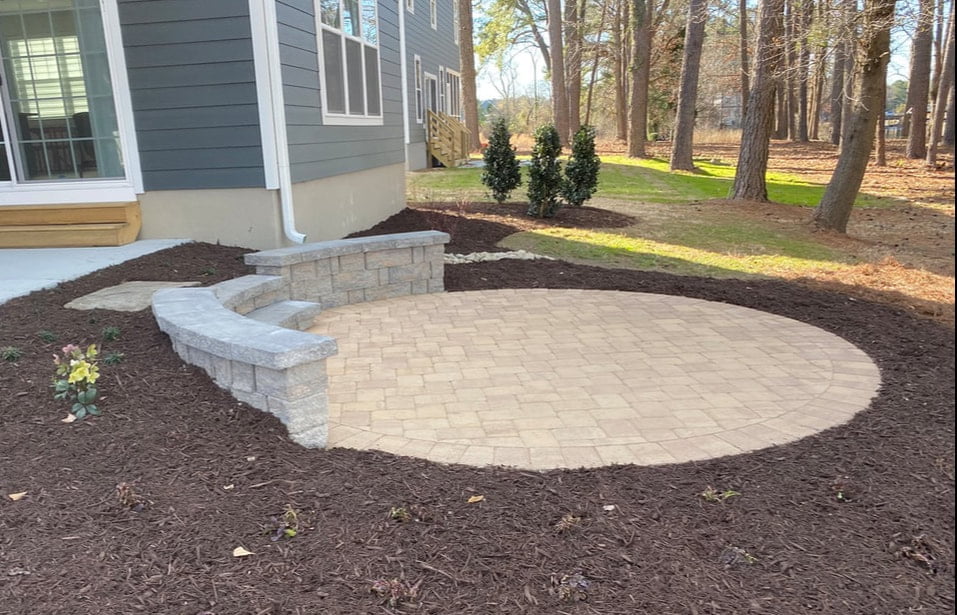
As you can see, standard brushed concrete is the cheapest option overall. However, if you have a small space and you’re hoping to do something decorative, pavers are typically going to be a better choice over stamped concrete. Not only are pavers more affordable, but installing pavers in a small space like this is actually going to be quicker than stamped concrete due to the extra cleaning and sealing that it requires. But we’ll talk more about installation speed down below!
500 Square Foot Job
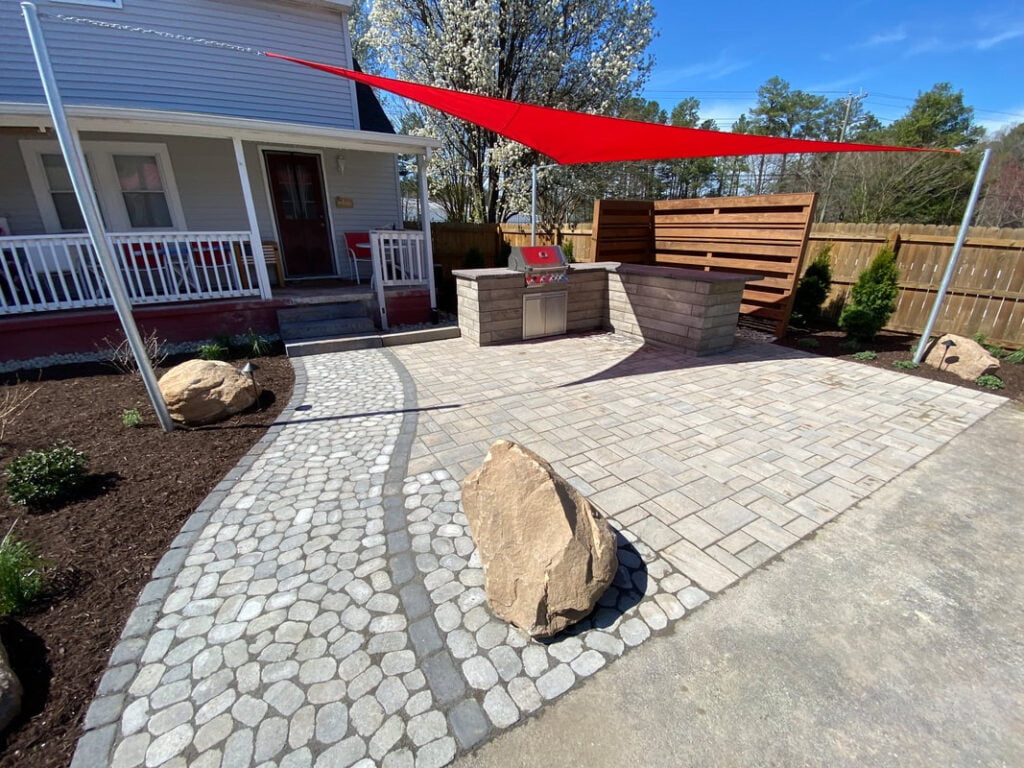
Once again, brushed concrete is still your most affordable option. As the size of the job grows we really start to see the difference in price, and at this point stamped concrete also becomes cheaper than pavers by a few thousand dollars.
1,500 Square Foot Job
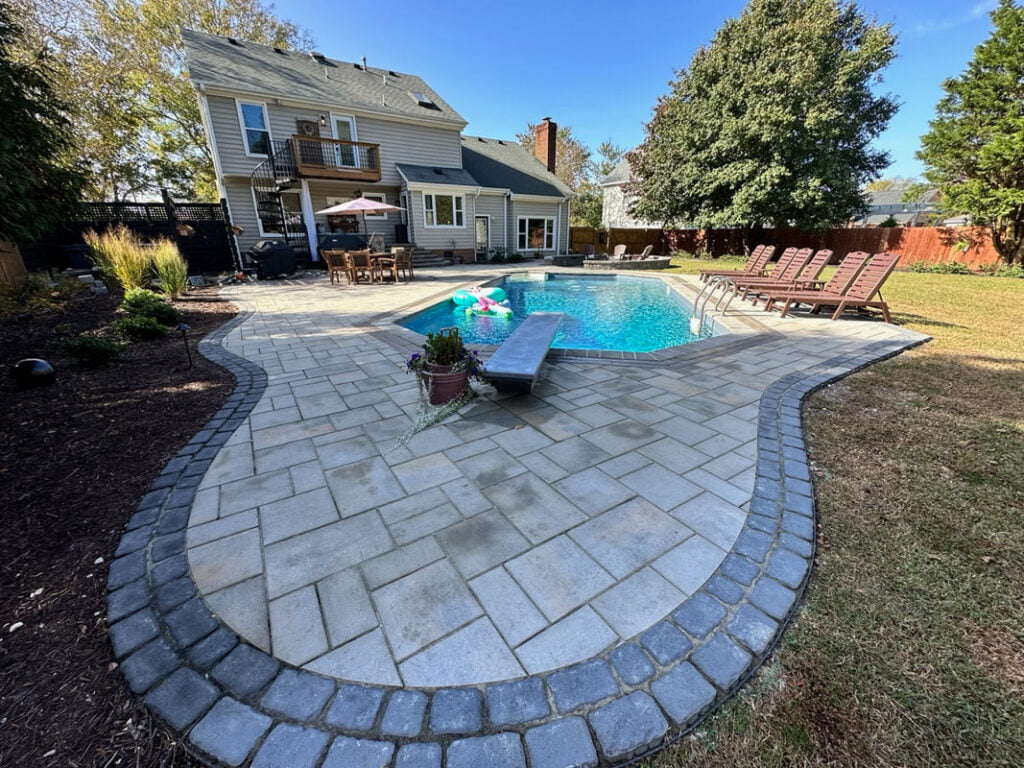
1,500 square feet is about the size of the average pool patio. A large job like this is definitely where you’re going to notice the biggest difference in price, with pavers costing more than double what concrete would cost.
Winner: Concrete
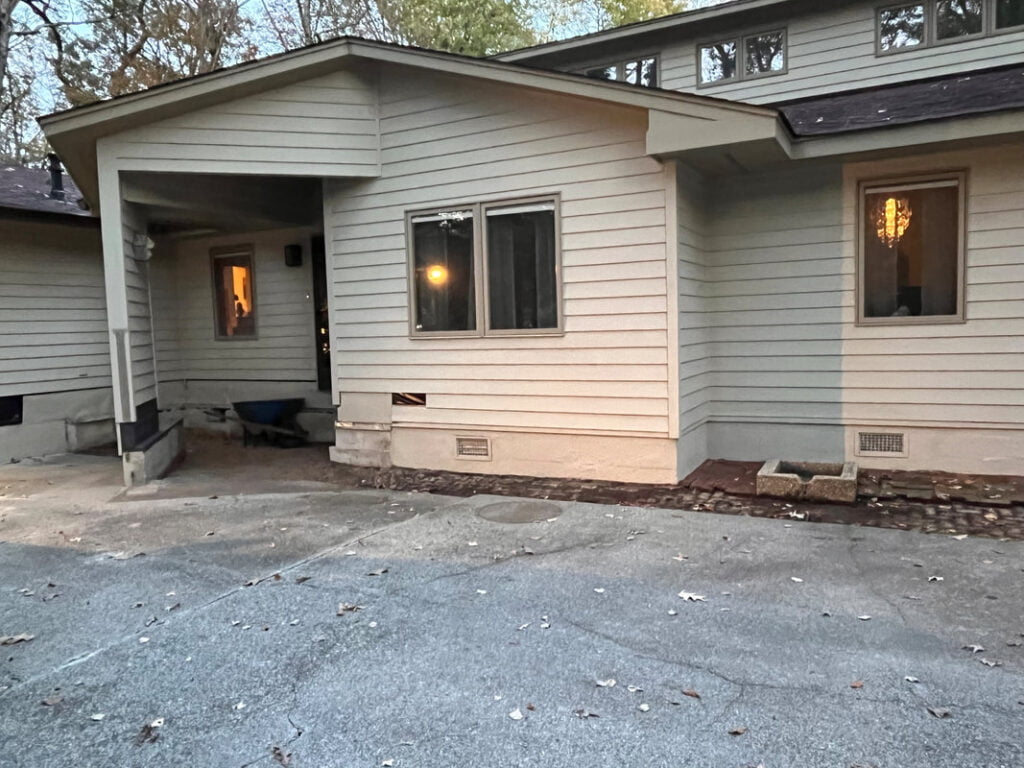
2. Cracking
In the paver world, we like to make the joke that there are only two types of concrete: concrete that has already cracked and concrete that will crack soon…and when it does crack, typically the entire slab has to be re-poured in order to fix it, which obviously means more time and more money.
One of the advantages of pavers is the ability to move and fix a small portion of the patio if something were to happen to it. A common problem that we might see is a tree root popping up. With pavers we can just take up the section that was affected, and within a couple of hours we’re able to adjust those roots, get the pavers re-positioned and back in place, and you’d never even know that there was an issue in the first place.
Winner: Pavers
We want to mention that while concrete is much more prone to cracking, it does have an advantage when it comes to settling, especially when it comes to a patio that’s been installed around a pool. For instance, if a pool was installed with something like sand as the back fill material, and that pool starts to settle, concrete is able to essentially bridge the gap between the settling and non-settling material underneath, hiding the issue for up to 15 years or so. Pavers, on the other hand, are much more sensitive to that settling since there are so many joints, and without a good stone back fill, those pavers will start to dip very quickly and you will see settling and cracking in the pavers themselves, typically within the first 6-9 months. This serves as a good reminder to ask your contractor about the material they’re using to back fill!
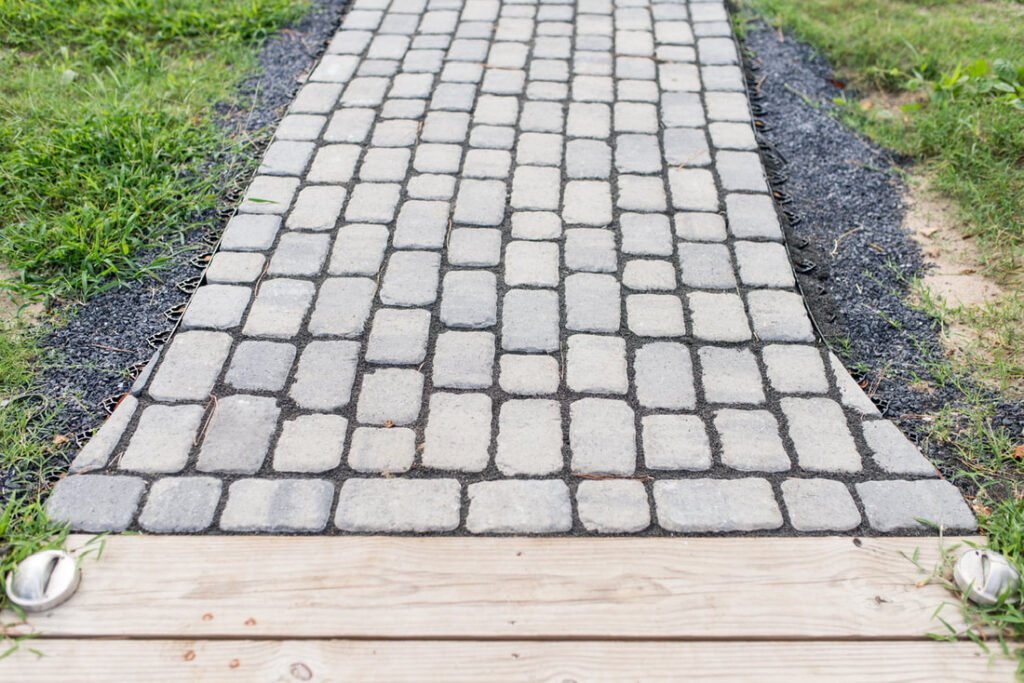
3. Maintenance
While all three of these options are relatively low maintenance, there are a few factors that need to be considered, particularly for stamped concrete and pavers.
Stamped concrete typically gets two coats of sealer when the project is first installed, but it will need to be re-sealed repeatedly throughout its lifetime. The manufacturer will say that you’ll get three to five years after that first sealing, but typically you should not wait that long. You’re going to want to get it cleaned and re-sealed about a year after the initial installation, and then again two to three years after that, and then you can start waiting 3-5 years between each cleaning and sealing. The bottom line is that the more sealer you keep on it, the more vibrant the colors will stay, and you’ll be able to protect and enjoy your investment for much longer!
The cost to clean and re-seal concrete is about $2 per square foot, which is something to consider when choosing your material. While stamped concrete may be cheaper than pavers on the front end, it can cost more to maintain over the lifetime.
Pavers, on the other hand, don’t always have to be sealed, and won’t need to be re-sealed like concrete does; however, you do have more joints to worry about, and with more joints comes more weeds! The best way to prevent weeds from growing in the cracks of your pavers is to keep them maintained with new polymeric sand every five to seven years. The cost to re-sand is similar to re-sealing at about $2 per square foot.
In summary, stamped concrete has the advantage of not having cracks and not having weeds in the joints, where pavers would have the advantage in that they have a lower cost to maintain over the years, after the initial investment.
Winner: Draw
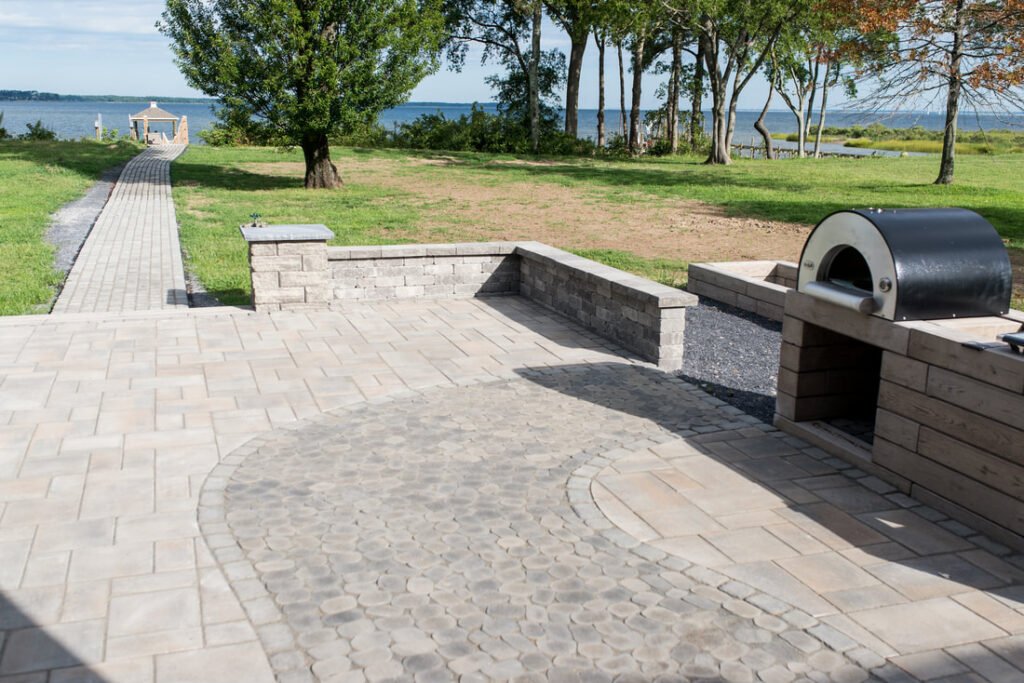
4. Weather
In general, weather is going to be more of an issue with concrete, brushed or stamped, than it is for pavers. In order to pour concrete during the winter the ground needs to be at least 40 degrees and up or it could freeze before the initial set, which prevents the concrete from curing. Pouring concrete in weather that is too cold can also cause spalling, which looks like a bunch of little fractures and flakes in the concrete, mostly on the surface.
On the other end of the spectrum, weather that’s too hot can cause poured concrete to start crusting on the top before the bottom can set, even with additives mixed in. On a very hot and windy day you can get what’s called crazing, which creates a bunch of cracks and fissures in the top of the concrete. While crazing isn’t a structural issue, it is very unsightly.
Lastly, concrete can’t be poured when it’s raining. If you’re scheduled to have your concrete poured, but at 5 am that day it looks like a pretty heavy chance of rain, your contractor really has to make an educated guess for whether to take that risk or not. If the rain starts falling and hits that wet concrete before it’s had a chance to cure it can cause a lot of issues, which isn’t a problem when it comes to pavers.
When it comes to installing pavers, we don’t really care about the weather! Of course there are days with heavy driving rain when we’re unable to work, or if the ground is frozen and covered in snow, but otherwise we can really work in any weather. Because we use a method called open grade for the base, which is essentially using a clean aggregate with no fines, it doesn’t hold any moisture so light to moderate rain doesn’t deter us. We’re able to come in and lay down our fabric, lay down our aggregate, install the pavers, and put the polymeric sand on top all without too many weather constraints.
Winner: Pavers
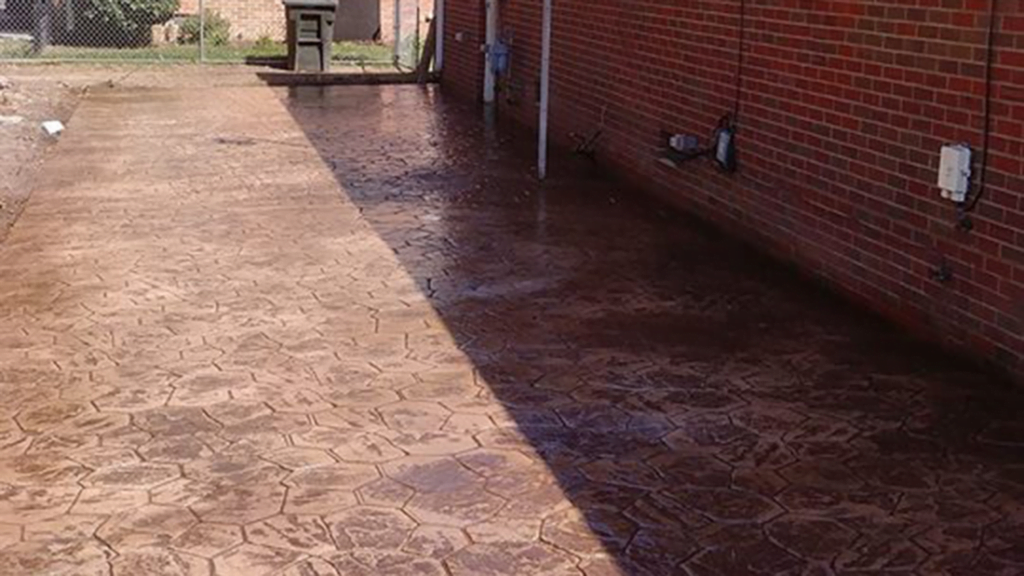
5. Warranty
Concrete installation typically comes with a workmanship warranty, guaranteeing that they’re putting in the work that they agreed to. Workmanship standards are based off of the American Concrete Institute (ACI) guidelines. Contractors should be following all ACI guidelines to ensure that they’re meeting the industry standard.
Pavers are a bit different because while most paver manufacturers like Techo Bloc and Belgard are giving lifetime warranties on their products, it’s up to each contractor to install those pavers properly with a good, solid base, which unfortunately does not always happen. Our company offers a two year workmanship warranty, which is related to whether the patio settles prematurely or not. There is definitely a lot more room for error when it comes to installing pavers, so you want to be sure you pick the right contractor for the job.
Winner: Concrete
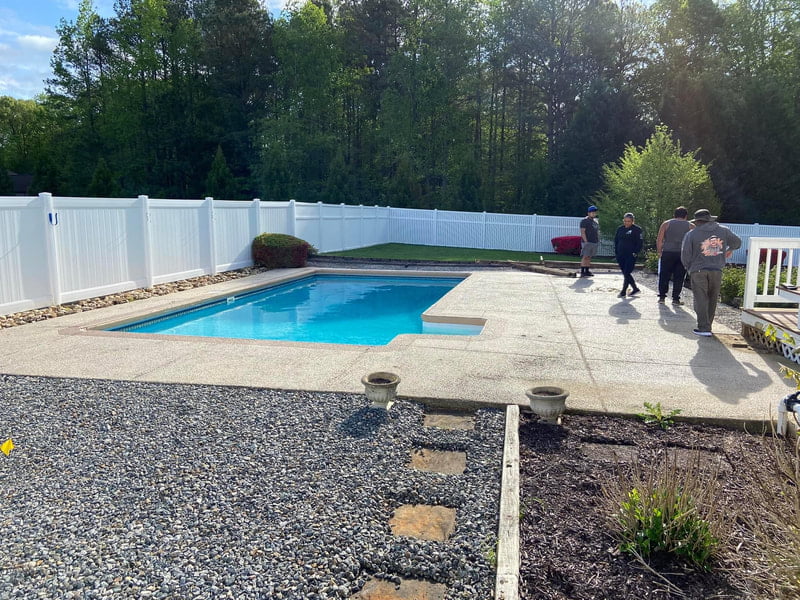
6. Speed
Pavers will typically take a little bit more time to install because they mus be laid individually. First the fabric goes down, adding five to six inches of base, then we place each paver by hand, and finally we add the polymeric sand to the joints to keep weeds out and allow moisture migration between the base and the surface.
Let’s take a look at those three different sized jobs again.
- A 100 square foot job will take one day – in and out and we’re done.
- A 500 square foot job is usually a two day job, possibly extending into the morning of a third day if there is a more complex design or inlay.
- When you move up to a 1,500 square foot job we’re looking at five to seven days (usually closer to seven).
Concrete is definitely a bit quicker when it comes to installation. For brushed concrete a 100 and 500 square foot job are going to take about the same time, typically a day or less. This includes forming and getting the base right, pouring the concrete, and getting cleaned up. For a 1,500 square foot job the process takes about two days.
Stamped concrete is a bit of a longer process, at least in terms of the number of days the project is ongoing. Any job that you’re going to do, even if it’s a small job, is going to take four to five days. The first day or two will be full days with actual construction and installation, but the rest of the days may be only an hour of work for repeated cleaning and sealing.
Winner: Concrete (by a small margin!)
Conclusion
